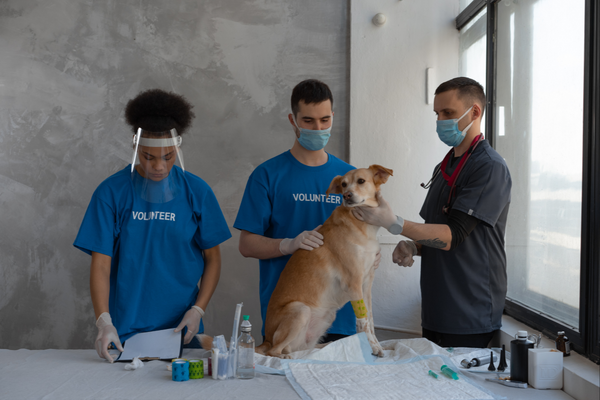Dogs are born to chew and bite. They evolved extremely strong jaw muscles and teeth. Few people know that a dog’s bite can potentially break or crush bones!
There is no doubt that dental treatment has a huge impact on a dog’s overall health. According to studies, only 2% of English people regularly take care of their pet’s teeth and 30% of them tend to downplay the signs of their dogs’ dental problems.
Meanwhile, veterinarians admit that early detection of your pet’s oral disease is vital and it allows us to avoid pain or inflammation.
What are the consequences of an inappropriate approach to such matters? How to clean the dog’s teeth properly?
Not just a bad breath
Most dental diseases cause chronic, sometimes even life-changing pain. Experts claim that dogs are able to hide discomfort, which is why their complaints are often overlooked. Instead, we can observe their aversion to food, increasing irritability or drool. They might also experience mood changes.
Untreated pet dental diseases lead to many complications and unpleasant consequences. Some of the most common are:
- Bad breath – the food particles usually cling to dogs’ teeth and form into plaque. Neglected teeth are the habitat of bacteria. The nasty, yellow, or brown film may quickly transform into tartar.
- Tooth loss – dog’s dental support structures can become irreversibly damaged. Tartar loosens the teeth and leads to tooth failure.
- Periodontal disease – serious gum infection which damages the soft tissue. It is caused by non-removed dental plaque. Periodontitis in a relatively short time can destroy the bone that supports your teeth.
- Weakened immune system – Plaque that’s left on the surface of your pet’s teeth can incite the immune system and provoke an inflammatory response. Diseases of the gums and teeth spread and they are likely to enter the bloodstream. The constant fight makes it hard for white blood cells to attack the bacteria.
An ounce of prevention is worth a pound of cure…
The dogs’ teeth should be cared for daily. Brushing is one of the most effective ways to remove dental plaque. Nowadays we have an access to a range of special cleaners that effectively eliminate food residues.
So how do brush the dog’s teeth? Here are the instructions!
- Make sure your dog is in a good mood
- Start calmly and gently raise the dog’s lips in order to expose the teeth
- Brush gradually, start with the part at the gum line and guide the movements down
- Brush your dog’s teeth at least a few times a week (however, daily brushing would be the best solution)
Try to avoid opening the dog’s mouth. This can put him under stress and provoke aggressive reactions. Remember not to use human toothpaste. It usually contains fluoride, which is toxic to dogs.
Another great way to combat tartar is to offer your pet specifically designed chew toys. They are made to remove excess plaque and protect the teeth. It is worth mentioning that this is a much more enjoyable activity for the dog because it is associated with chewing.
Professional care and proper treatment
The daily care of your dog’s teeth is crucial. Sometimes, however, it is advisable to consult a specialist and introduce veterinary treatment.
Find a vet in your area and provide your pet with the best care possible!
The article is written in collaboration with https://animaly.uk/

 DogExpress
DogExpress


















 in Chandigarh, India.
in Chandigarh, India. 
